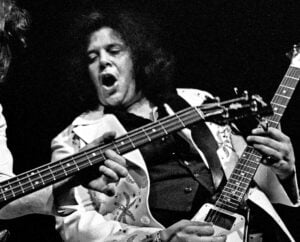On This Day in 1970: Santana Hit No. 1 on the U.S. Charts, Knocking CCR from the Top and Cementing Their Place in Rock History

Photo by Eddie Janssens, licensed under CC BY-SA 4.0, via Wikimedia Commons.
Five Months After Release, a Chart-Topping Moment
On October 24, 1970, Santana’s second studio album Abraxas reached No. 1 on the U.S. Billboard 200 chart, claiming the top spot from Creedence Clearwater Revival’s Cosmo’s Factory.
Released on September 23, 1970, the album proved to be a breakthrough, blending Latin rhythms, blues, rock, and jazz fusion.
View this post on Instagram
Hit Tracks that Defined the Album
Abraxas included standout songs that helped drive its success. Among them were Oye Como Va—a cover of a Tito Puente song—and Black Magic Woman—originally by Fleetwood Mac. The latter reached No. 4 on the U.S. singles chart.
The album’s eclectic mix of styles expanded Santana’s audience and made it a defining rock moment of 1970. It stayed at No. 1 for six weeks and held a spot on the chart for 88 weeks.
A New Sound That Shook Rock Music
Santana’s lineup at the time brought together guitarist Carlos Santana, keyboardist/vocalist Gregg Rolie, rhythm section, and a strong percussion corps. This mix created a fresh rock sound built on Latin and blues influences. Critics and fans alike pointed to Abraxas as a major moment that helped shape what rock could be.
In that context, taking over the top of the charts from Creedence Clearwater Revival—who represented a very different American rock style—felt symbolic. It made clear that rock was widening in its reach and influence.
Legacy and Lasting Impact
Abraxas is now listed among the greatest albums of all time, a recognition of its broad influence across rock and Latin music. It changed how bands thought about rhythm, genre, and sound.
On this day in 1970, when Santana reached No. 1, they didn’t just claim a chart spot—they flagged a new era.












